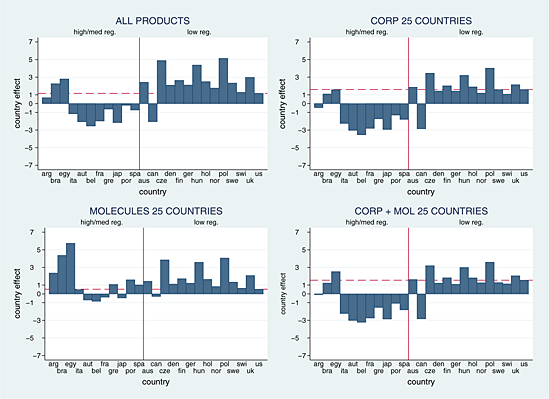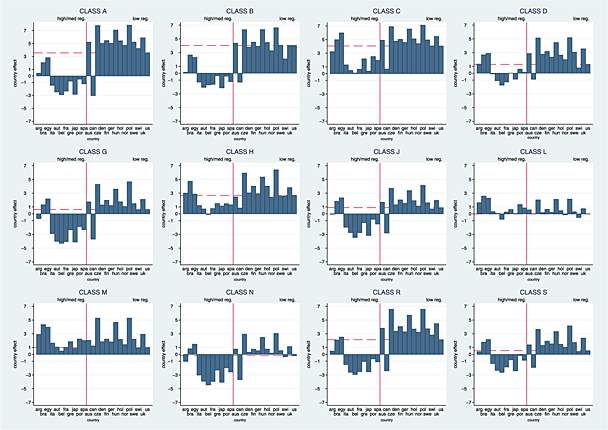Cabrales and Jiménez-Martín (2013) answer this question using the IMS MIDAS international database between 1998 and 2003. They find that:
…there is a systematic and quantitatively large division between a group of less regulated countries whose average prices are higher and a group of more regulated ones where the average price level is lower. This difference is stronger for newer, more innovative products, and smaller for more mature and widely diffused ones.
Visual evidence helps demonstrate this result.

The different specifications refer to all products, cases where the corporation to which the product belongs sells goods in at least 25 countries, cases where the given molecule is sold in at least 25 countries, and cases where both these restrictions hold.
The results are similar when the authors restrict the sample to only the top-selling drugs. The authors also look at drug prices by country for different therapeutic classes.

Maybe U.S. drug prices aren’t so high afterall.
Market power and price
Another robust result, but somewhat contrary to conventional wisdom is that, in most countries, their own multinationals command no price premium with respect to foreign ones. Local, non-multinational firms tend to have lower prices than any multinational, and whether these multinationals are foreign or local does not affect prices in a statistically significant way. Our results, thus, do not support the view that the outcome of regulation conforms with the short-sighted best interest of local consumers. We do have evidence, on the other hand, that quality matters for prices, that firms exercise considerable market power, and that all multinational corporations obtain a price advantage.
Source
- Cabrales, A. and Jiménez-Martín, S. (2013), THE DETERMINANTS OF PRICING IN PHARMACEUTICALS: ARE US PRICES REALLY SO HIGH?. Health Econ.. doi: 10.1002/hec.2887
1 Comment